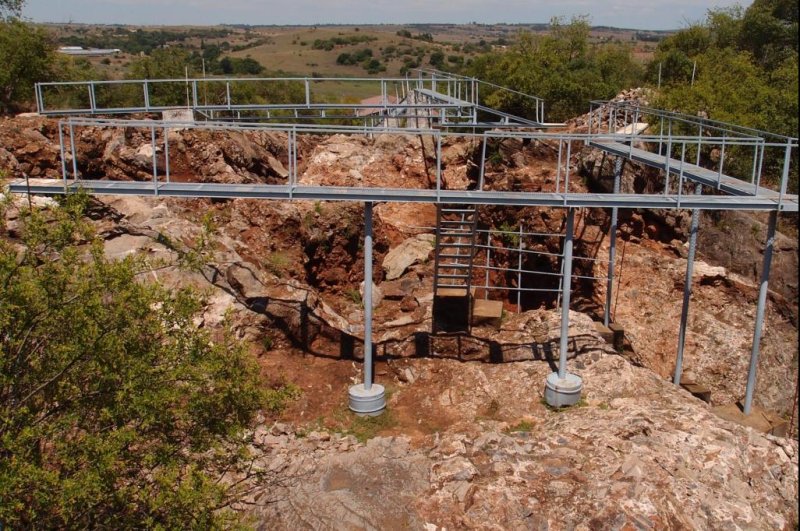Ancient hominin bones found at the Sterkfontein Cave site in South Africa suggest some early humans were still regularly climbing trees as many as 2 million years ago. Photo by University of Kent
March 31 (UPI) -- Analysis of ancient hominin remains recovered in South Africa suggests an early human ancestor regularly climbed trees.
The earliest hominins walked upright on two legs, and scientists suspect they evolved from apes that had descended from the trees and begun traversing the land.
But the latest research suggests hominins didn't abandon the trees altogether.
Using a novel technique for analyzing the internal structure of ancient bones, scientists were able to locate evidence of tree-climbing behavior among the fossil remains of a pair of hominin species living 2 million years ago in southern Africa.
Both hominins possessed more human-like than ape-like hip joints, suggesting both walked on two feet. However, CT scans of the ancient leg bones showed the two hominins used their legs in unique ways.
"Our study examines the 'frequency' at which different hip joint angles were adopted," researcher Matthew Skinner, a paleoanthropologist at the University of Kent in Britain, told UPI in an email. "Inside the long bones (including your femur) of the skeleton there is a spongy network of bone called trabecular bone. It functions to transfer force from the joint surface to the shaft of the bone."
Advanced imaging like CT scans can reveal the signatures of this remodeling process. And by studying the remodeling process in different species, scientists can link evidence of chances in the bone with different movement patterns.
"Our study shows that in non-human apes (such as gorillas and chimpanzees) this remodeling process has resulted in two predominant pillars of spongy bone in the head of the femur," Skinner said. "The location and direction of these two pillars corresponds to joint positioning during walking on all fours (not very flexed) and climbing (highly flexed). In humans, there is only one pillar associated with the position of our femur in our hip joint during walking on two legs."
The evidence of remodeling among the ancient femurs found in South Africa suggests the two hominins, though bipedal, regularly climbed trees. Previously, scientists assumed that by 2 million years ago, hominins spent the vast majority of their time walking on the ground, but the latest findings suggests tree climbing remained an important part of the adaptive repertoire of early hominin species.
Scientists are fairly certain that one of the fossils belongs to Australopithecus africanus, a direct ancestor of modern humans.
"The other we are less certain about and it could belong either to a species called Paranthropus (a more 'robust' version of Australopithecus in terms of its skull, jaws and teeth), or an early member of the genus Homo (such as Homo habilis)," Skinner said.
Researchers published the results of their analysis of the remains of the two tree-climbing hominins this week in the journal PNAS.
Skinner and his colleagues plan to use similar analysis techniques to study other hominin fossils from disparate regions -- including the hands, shoulders and spines of early humans -- to better understand the movement patterns and behaviors of our earliest ancestors.















